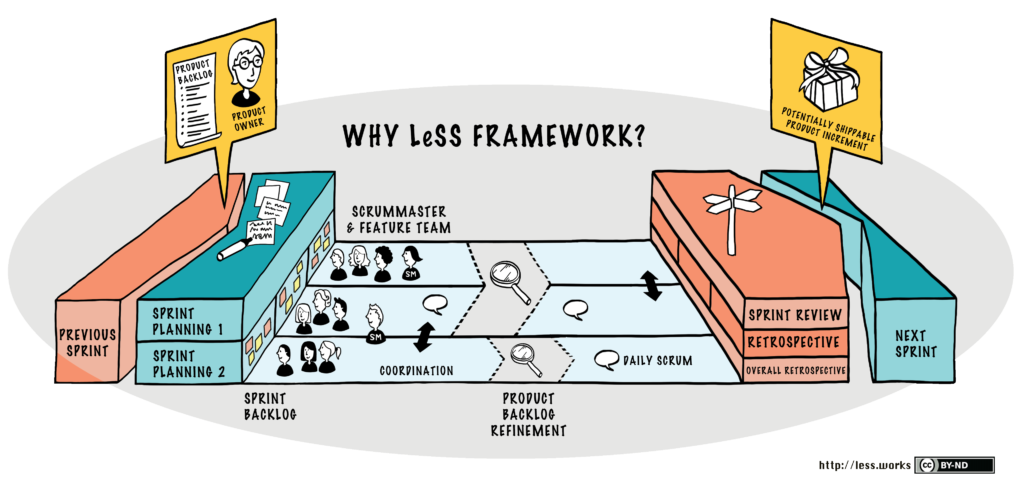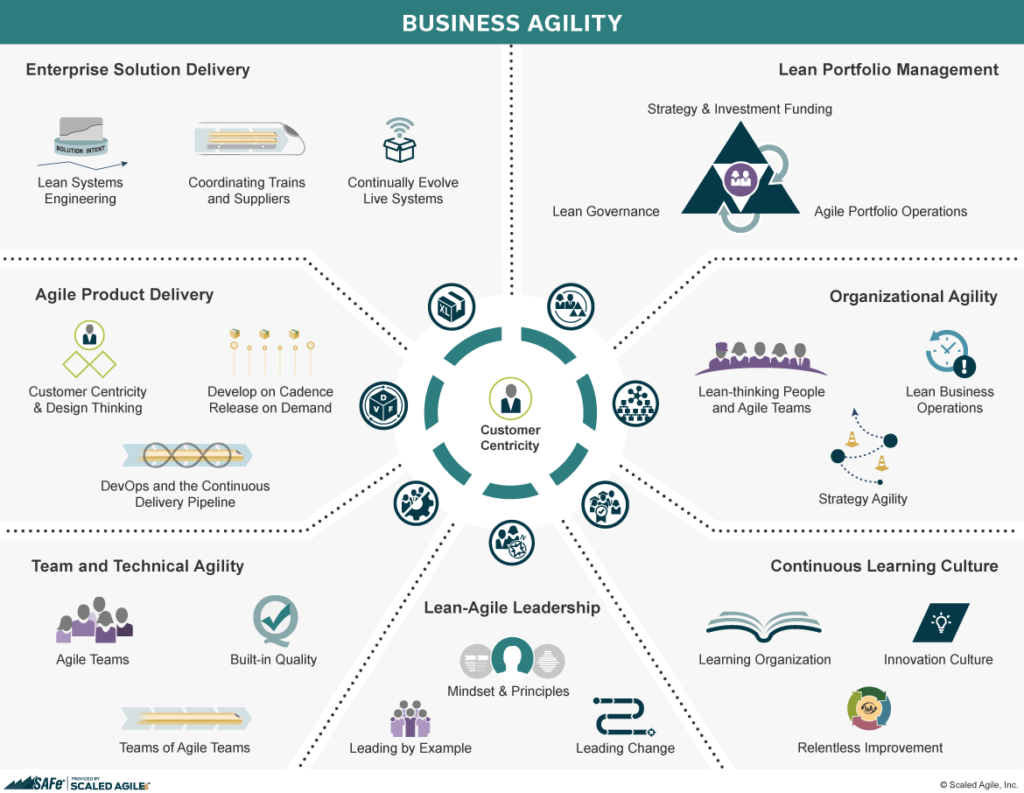Scrum of Scrums, LeSS (Large-Scale Scrum), and SAFe (Scaled Agile Framework) are all frameworks designed to facilitate Agile practices and improve collaboration in large-scale software development projects. Each framework has its own approach to scaling Agile methodologies, allowing multiple teams to work together effectively.
Scrum of Scrums:
Scrum of Scrums is an approach for scaling Scrum in larger organizations. When multiple Scrum teams are working on a large project, they can face challenges in coordination and communication. Scrum of Scrums helps to address these challenges by establishing a higher-level meeting that involves representatives from each Scrum team. These representatives, often referred to as “ambassadors,” meet regularly to discuss progress, dependencies, and potential impediments. The aim is to facilitate better coordination and collaboration across teams to ensure alignment with overall project goals.
LeSS (Large-Scale Scrum):
LeSS is an Agile scaling framework that extends the principles and practices of single-team Scrum to larger product development efforts. It is based on the belief that scaling Agile should focus on simplification and removing unnecessary complexity. LeSS advocates for having fewer roles, events, and artifacts compared to other scaling frameworks. It encourages organizations to work with a single product backlog, a shared Definition of Done, and one Product Owner responsible for the entire product. LeSS aims to maintain the spirit of Scrum while scaling it effectively for multiple teams, enabling them to collaborate as one cohesive unit.

SAFe (Scaled Agile Framework):
SAFe is a comprehensive and prescriptive scaling framework designed to help organizations adopt Agile practices across multiple teams, programs, and portfolios. It provides a set of roles, ceremonies, and artifacts to facilitate collaboration, alignment, and synchronization at different levels of the organization. SAFe offers three primary levels: team, program, and portfolio. At each level, it defines roles such as Product Owner, Scrum Master, Release Train Engineer, and various ceremonies and artifacts. SAFe provides a structured approach to align strategy, execution, and delivery in larger enterprises.

Each scaling framework has its own strengths and weaknesses, and the choice between them depends on the specific needs, culture, and size of the organization. It’s essential to thoroughly understand the principles and practices of each framework and assess how well they align with the organization’s goals before deciding on the appropriate scaling approach.

